


 Français
Français


Ever wonder why you pay the price you pay when you buy chicken at the grocery store? Or ask yourself why this particular brand and cut of chicken breast cost much less last week? In fact, many Canadians ask themselves how the price they pay for chicken at their local supermarket was decided. To help them understand, Chicken Farmers of Canada has created an infographic to clear up some myths surrounding consumer prices – let’s take a look!
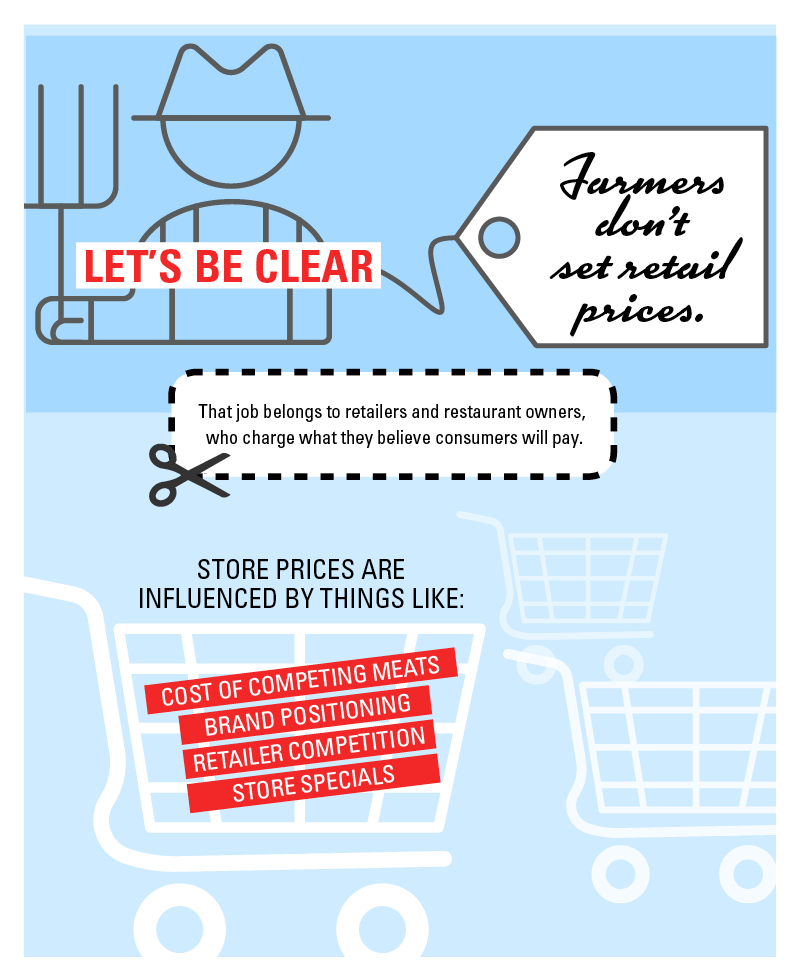
First things first: Farmers don’t set retail prices. That job belongs to retailers and restaurant owners, who charge what they believe consumers will pay. In fact, store and restaurant prices are influenced by things like:
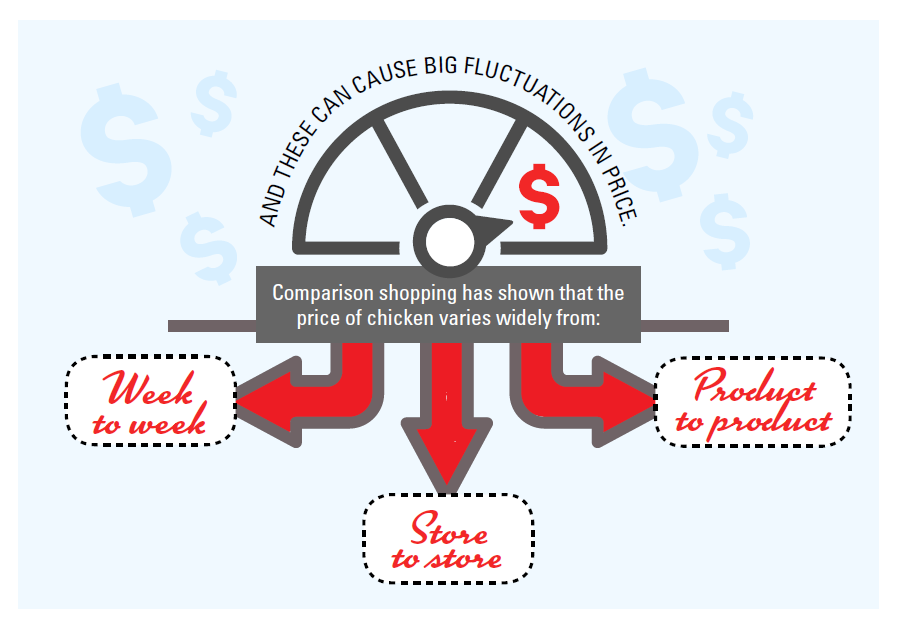
These can all cause a big fluctuation in prices. In fact, when shopping for chicken, you will notice that prices change week to week, store to store and product to product. So, what is the biggest influence on retail prices in Canada? Where, and when you shop. For example, the same brand, same cut of meat can be priced differently in various stores throughout the same city. Another example: a leading brand of chicken breast can cost you $10.98/kg in one store and $21.49/kg in another – same week, same city.
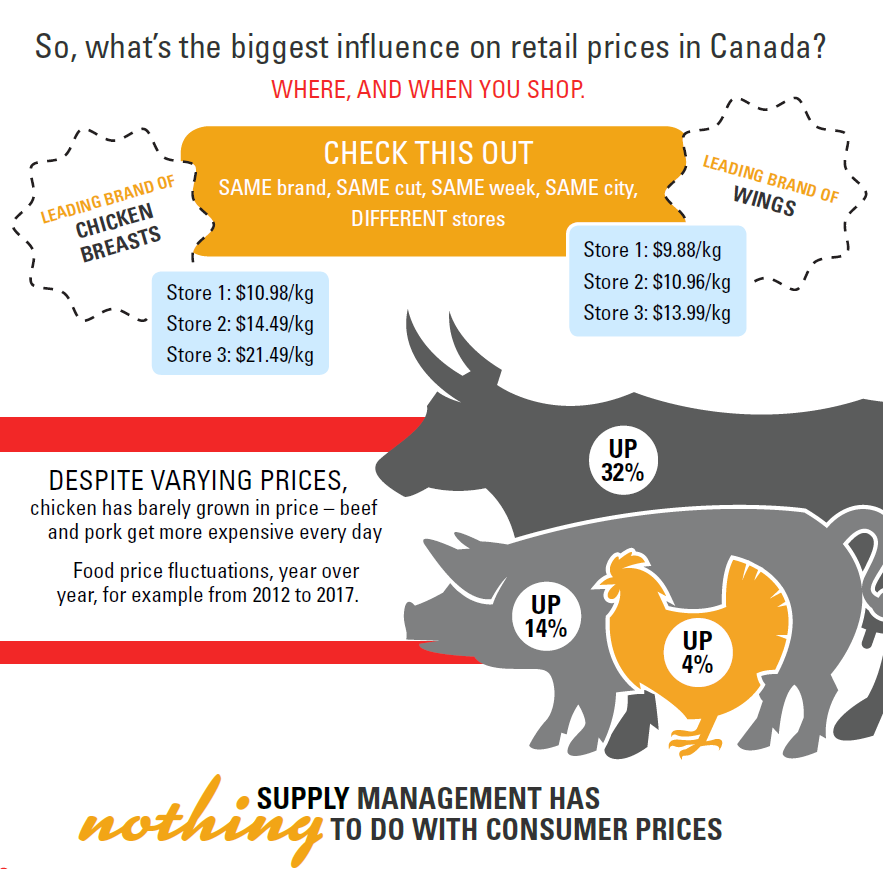
Despite varying prices, chicken has barely grown in price – beef and pork get more expensive every day. In fact, from 2012-2017, beef and pork have risen 32% and 14% respectively, while chicken has only risen 4%. This is thanks to supply management where chicken farmers only produce enough to meet the demand, ensuring there are no shortages or surpluses of chicken, which can create spikes in prices.
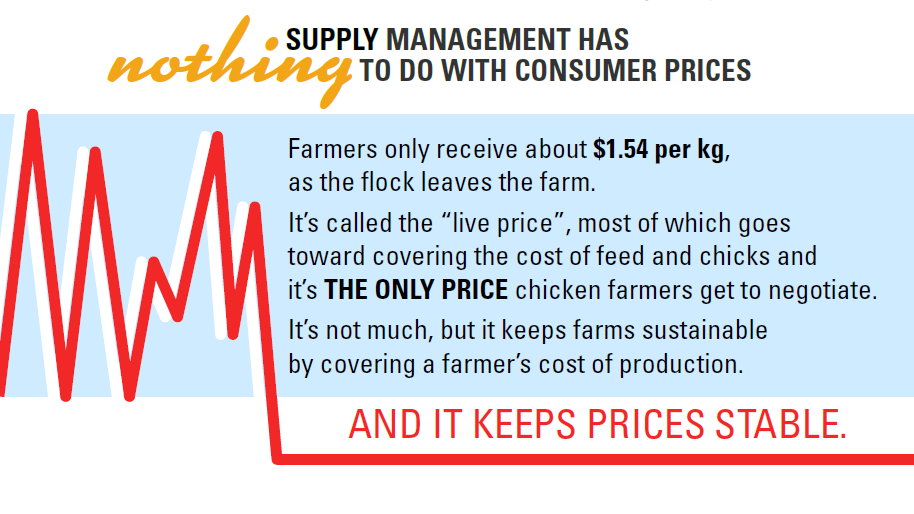
However, it is important to remember that supply management has nothing to do with consumer prices. Farmers only receive about $1.54 per kg, as the flock leaves the farm. It’s called the “live price”, most of which goes toward covering the cost of feed and chicks. This is the only price chicken farmers get to negotiate.
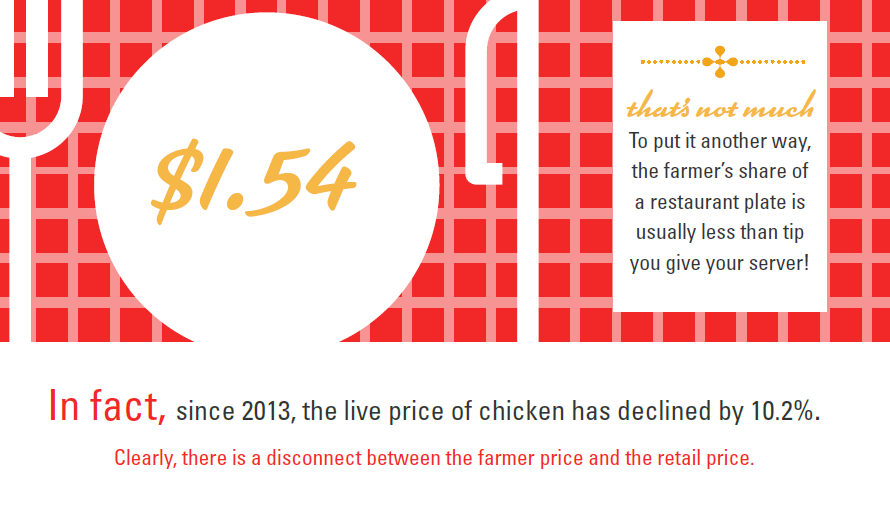
$1.54 – that’s not much. To put it another way, the farmer’s share of a restaurant plate is usually less than the tip you give your server! In fact, since 2013 the live price of chicken has declined by 10.2%. With consumers paying more and chicken farmers getting less, it’s clear that there’s no connection.
For more information, check out our infographic called Supply Management and Consumer Prices- Don’t Believe the Hype!